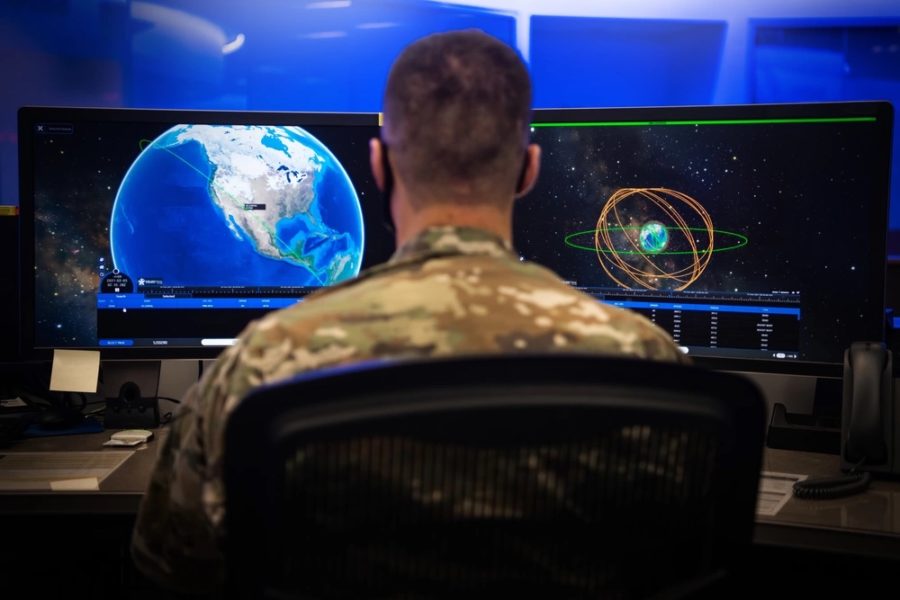Retired Lt. Gen. John E. Shaw is often credited as the Pentagon’s trailblazer in advocating for dynamic space operations—maneuvering satellites in and between orbits and refueling them to better operate in a contested domain.
Now, he wants the military to get more dynamic in how it monitors and tracks objects and threats in orbit, as part of a broader shift and upgrade in space domain awareness, he said Aug. 26
“We’re still doing that old way of propagating orbits and debris and such and trying to catalog everything,” Shaw, the former deputy commander of U.S. Space Command, said during a SpaceNews webinar. “And we haven’t really gone to the next level of doing dynamic tracking of hard-to-detect and -track targets in nonstandard orbits. We really just haven’t gotten there, and we need to get there.”
Space Force, Space Command, and other Pentagon leaders have been talking about getting better at space domain awareness for years now, Shaw noted—from expanding how far they can monitor to being able to assign intent behind movements.
“And yet, the capability that’s being delivered to Space Command today isn’t significantly different from what existed five, six, seven years ago,” Shaw said.
It’s a capability Shaw compared to “looking for our keys under the lamppost.”
The former Space Force general isn’t alone in calling for enhanced SDA, as space domain awareness is known. Earlier this year, Chief of Space Operations Gen. B. Chance Saltzman said the service needs to invest in “actionable space domain awareness” that gives decision-makers more context and understanding of what’s happening in the domain.
And in June, Col. Bryon McClain, the program executive officer for SDA and combat power, said his office wants to open itself up to new ideas and technology from industry for the mission. A request for information the office issued included nods to the idea of satellites that can be refueled and move around to get closer to other objects on orbit—similar to the dynamic operations Shaw envisioned.
The essential question, Brian Weeden of the Aerospace Corporation said during the SpaceNews event, is “How do we get beyond just tracking things in space?”
Specifically, Weeden said, the Pentagon needs to get to a “holistic understanding of the space environment, the capabilities, the threats,” not just cataloging and tracking objects in orbit.
Yet that effort is hampered in part by the fact that just trying to catalog and track everything is no small feat—and getting even harder as more and more satellites are launched every year.
“We still haven’t solved the basic catalog maintenance orbital tracking problem. There are still hard challenges there,” Weeden said.
Space Delta 2 is the Space Force organization responsible for that problem and must keep tabs on more than 45,000 objects in orbit. The plan is to eventually transfer much of that responsibility for “traffic management” to the Department of Commerce, allowing the Space Force to focus on the kinds of domain awareness Shaw, Saltzman, and others want. That process has been hit with delays, but Commerce officials told SpaceNews last month that they are on the cusp of beta testing the new system.


